1. Kim LK, Kim JR, Shin SS, Kim IJ, Kim BN, Hwang GT. 2011; Analysis of influencing factors to depth of epidural space for lumbar transforaminal epidural block in Korean. Korean J Pain. 24:216–20. DOI:
10.3344/kjp.2011.24.4.216. PMID:
22220243. PMCID:
PMC3248585.

2. Manchikanti L, Pampati V, Falco FJ, Hirsch JA. 2013; Growth of spinal interventional pain management techniques: analysis of utilization trends and Medicare expenditures 2000 to 2008. Spine (Phila Pa 1976). 38:157–68. DOI:
10.1097/BRS.0b013e318267f463. PMID:
22781007.
3. Sencan S, Edipoglu IS, Celenlioglu AE, Yolcu G, Gunduz OH. 2020; Comparison of treatment outcomes in lumbar central stenosis patients treated with epidural steroid injections: interlaminar versus bilateral transforaminal approach. Korean J Pain. 33:226–33. DOI:
10.3344/kjp.2020.33.3.226. PMID:
32606267. PMCID:
PMC7336349.

4. Helm S, Harmon PC, Noe C, Calodney AK, Abd-Elsayed A, Knezevic NN, et al. 2021; Transforaminal epidural steroid injections: a systematic review and meta-analysis of efficacy and safety. Pain Physician. 24(S1):S209–32. DOI:
10.36076/ppj.2021.24.S209-S232. PMID:
33492919.
5. Bensler S, Sutter R, Pfirrmann CWA, Peterson CK. 2018; Particulate versus non-particulate corticosteroids for transforaminal nerve root blocks: comparison of outcomes in 494 patients with lumbar radiculopathy. Eur Radiol. 28:946–52. DOI:
10.1007/s00330-017-5045-z. PMID:
28894933.

6. Vad VB, Bhat AL, Lutz GE, Cammisa F. 2002; Transforaminal epidural steroid injections in lumbosacral radiculopathy: a prospective randomized study. Spine (Phila Pa 1976). 27:11–6. DOI:
10.1097/00007632-200201010-00005. PMID:
11805628.
7. Donohue NK, Tarima SS, Durand MJ, Wu H. 2020; Comparing pain relief and functional improvement between methylprednisolone and dexamethasone lumbosacral transforaminal epidural steroid injections: a self-controlled study. Korean J Pain. 33:192–8. DOI:
10.3344/kjp.2020.33.2.192. PMID:
32235020. PMCID:
PMC7136301.

8. Rezende R, Jacob Júnior C, da Silva CK, de Barcellos Zanon I, Cardoso IM, Batista Júnior JL. 2015; Comparison of the efficacy of transforaminal and interlaminar radicular block techniques for treating lumbar disk hernia. Rev Bras Ortop. 50:220–5. DOI:
10.1016/j.rbo.2013.12.007. PMID:
26229920. PMCID:
PMC4519619.

9. Chang-Chien GC, Knezevic NN, McCormick Z, Chu SK, Trescot AM, Candido KD. 2014; Transforaminal versus interlaminar approaches to epidural steroid injections: a systematic review of comparative studies for lumbosacral radicular pain. Pain Physician. 17:E509–24. DOI:
10.36076/ppj.2014/17/E509. PMID:
25054401.
11. Lutz GE, Vad VB, Wisneski RJ. 1998; Fluoroscopic transforaminal lumbar epidural steroids: an outcome study. Arch Phys Med Rehabil. 79:1362–6. DOI:
10.1016/S0003-9993(98)90228-3. PMID:
9821894.

13. Schaufele MK, Hatch L, Jones W. 2006; Interlaminar versus transforaminal epidural injections for the treatment of symptomatic lumbar intervertebral disc herniations. Pain Physician. 9:361–6. PMID:
17066121.
14. Lee SC, Kim MW. 2004; The evaluation of epidural depth at L3-4 and L4-5 using magnetic resonance imaging and its relationship to BMI. Korean J Anesthesiol. 47:34–7. DOI:
10.4097/kjae.2004.47.1.34.

15. Ra IH, Min WK. 2015; Optimal angle of needle insertion for fluoroscopy-guided transforaminal epidural injection of L5. Pain Pract. 15:393–9. DOI:
10.1111/papr.12187. PMID:
24690186.

16. Hong JH, Lee YC, Lee HM, Kang CH. 2008; An analysis of the outcome of transforaminal epidural steroid injections in patients with spinal stenosis or herniated intervertebral discs. Korean J Pain. 21:38–43. DOI:
10.3344/kjp.2008.21.1.38.

17. Goodman BS, Posecion LW, Mallempati S, Bayazitoglu M. 2008; Complications and pitfalls of lumbar interlaminar and transforaminal epidural injections. Curr Rev Musculoskelet Med. 1:212–22. DOI:
10.1007/s12178-008-9035-2. PMID:
19468908. PMCID:
PMC2682416.

18. Chang A, Ng AT. 2020; Complications associated with lumbar transforaminal epidural steroid injections. Curr Pain Headache Rep. 24:67. DOI:
10.1007/s11916-020-00900-9. PMID:
32990823.

19. Husseini JS, Simeone FJ, Staffa SJ, Palmer WE, Chang CY. 2020; Fluoroscopically guided lumbar spine interlaminar and transforaminal epidural injections: inadvertent intravascular injection. Acta Radiol. 61:1534–40. DOI:
10.1177/0284185120903450. PMID:
32050772.

20. Algrain H, Liu A, Singh S, Vu TN, Cohen SP. 2018; Cervical epidural depth: correlation between cervical MRI measurements of the skin-to-cervical epidural space and the actual needle depth during interlaminar cervical epidural injections. Pain Med. 19:1015–22. DOI:
10.1093/pm/pnx066. PMID:
28482062.

21. Galbraith AS, Wallace E, Devitt A. 2019; Examining the association of body mass index and the depth of epidural space, radiation dose exposure and fluoroscopic screening time during transforaminal nerve block injection: a retrospective cohort study. Ir J Med Sci. 188:295–302. DOI:
10.1007/s11845-018-1845-7. PMID:
29911292.

22. Jones JH, Singh N, Nidecker A, Li CS, Fishman S. 2017; Assessing the agreement between radiologic and clinical measurements of lumbar and cervical epidural depths in patients undergoing prone interlaminar epidural steroid injection. Anesth Analg. 124:1678–85. DOI:
10.1213/ANE.0000000000001839. PMID:
28099288. PMCID:
PMC5398916.

24. Brunner P, Amoretti N, Soares F, Brunner E, Cazaux E, Brocq O, et al. 2012; Approaches in injections for radicular pain: the transforaminal, epidural and transfacet approaches. Diagn Interv Imaging. 93:711–22. DOI:
10.1016/j.diii.2012.07.005. PMID:
22925594.

25. Bhatia A, Flamer D, Shah PS, Cohen SP. 2016; Transforaminal epidural steroid injections for treating lumbosacral radicular pain from herniated intervertebral discs: a systematic review and meta-analysis. Anesth Analg. 122:857–70. DOI:
10.1213/ANE.0000000000001155. PMID:
26891397.
26. Botwin KP, Gruber RD, Bouchlas CG, Torres-Ramos FM, Sanelli JT, Freeman ED, et al. 2002; Fluoroscopically guided lumbar transformational epidural steroid injections in degenerative lumbar stenosis: an outcome study. Am J Phys Med Rehabil. 81:898–905. DOI:
10.1097/00002060-200212000-00003. PMID:
12447088.

27. Botwin K, Natalicchio J, Brown LA. 2004; Epidurography contrast patterns with fluoroscopic guided lumbar transforaminal epidural injections:a prospective evaluation. Pain Physician. 7:211–5. DOI:
10.36076/ppj.2004/7/211. PMID:
16868594.
28. Lee JH, Shin KH, Park SJ, Lee GJ, Lee CH, Kim DH, et al. 2018; Comparison of clinical efficacy between transforaminal and interlaminar epidural injections in lumbosacral disc herniation: a systematic review and meta-analysis. Pain Physician. 21:433–48. DOI:
10.36076/ppj.2018.5.433. PMID:
30282389.
29. Carnie J, Boden J, Gao Smith F. 2002; Prediction by computerised tomography of distance from skin to epidural space during thoracic epidural insertion. Anaesthesia. 57:701–4. DOI:
10.1046/j.1365-2044.2002.02572_4.x. PMID:
12059829.

30. Brummett CM, Williams BS, Hurley RW, Erdek MA. 2009; A prospective, observational study of the relationship between body mass index and depth of the epidural space during lumbar transforaminal epidural steroid injection. Reg Anesth Pain Med. 34:100–5. DOI:
10.1097/AAP.0b013e31819a12ba. PMID:
19282707. PMCID:
PMC2715548.

31. Yingsakmongkol W, Poriswanich K, Kotheeranurak V, Numkarunarunrote N, Limthongkul W, Singhatanadgige W. 2022; How prone position affects the anatomy of lumbar nerve roots and psoas morphology for prone transpsoas lumbar interbody fusion. World Neurosurg. 160:e628–35. DOI:
10.1016/j.wneu.2022.01.104. PMID:
35108649.

32. Amaral R, Daher MT, Pratali R, Arnoni D, Pokorny G, Rodrigues R, et al. 2021; The effect of patient position on psoas morphology and in lumbar lordosis. World Neurosurg. 153:e131–40. DOI:
10.1016/j.wneu.2021.06.067. PMID:
34166827.

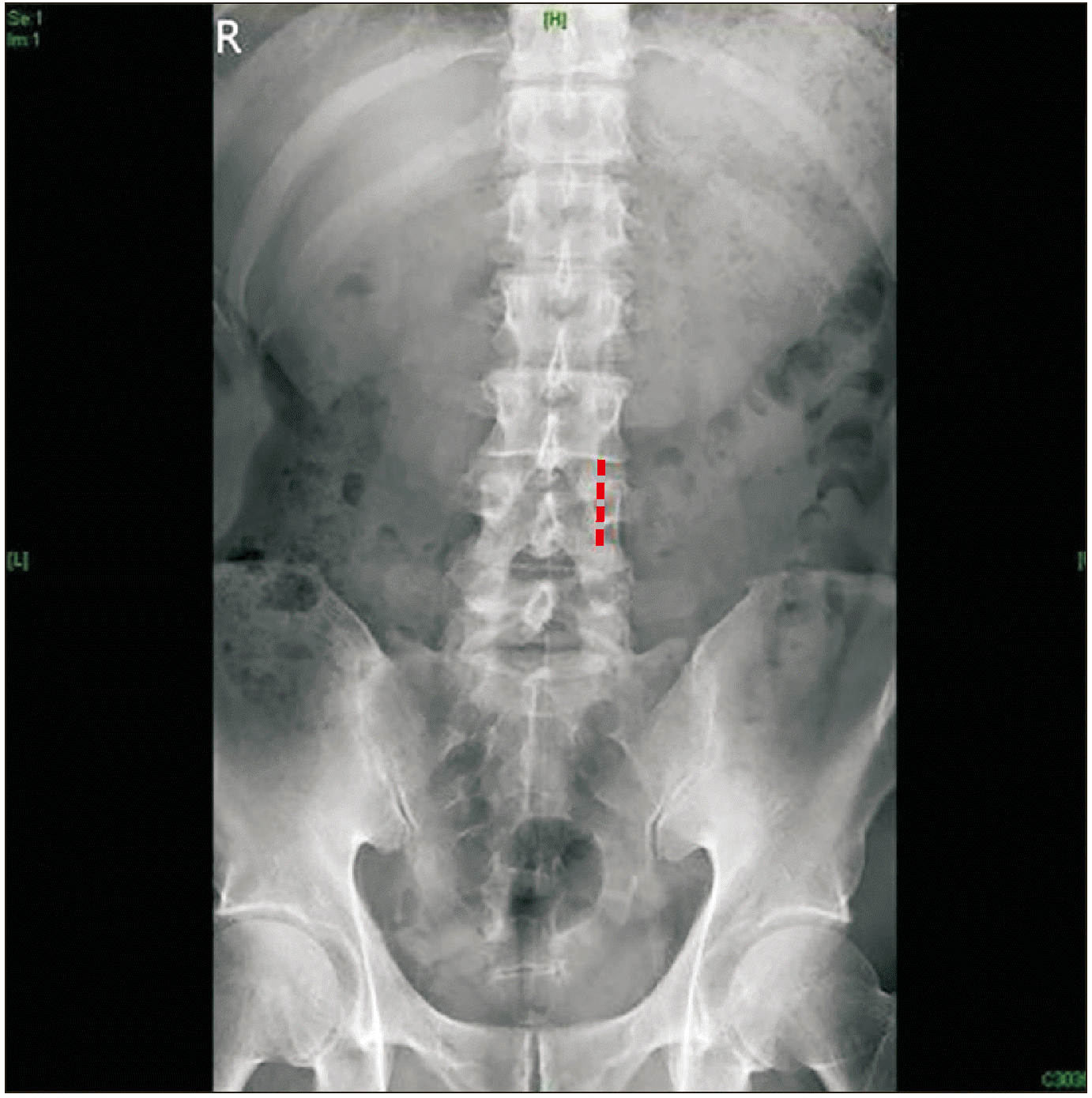
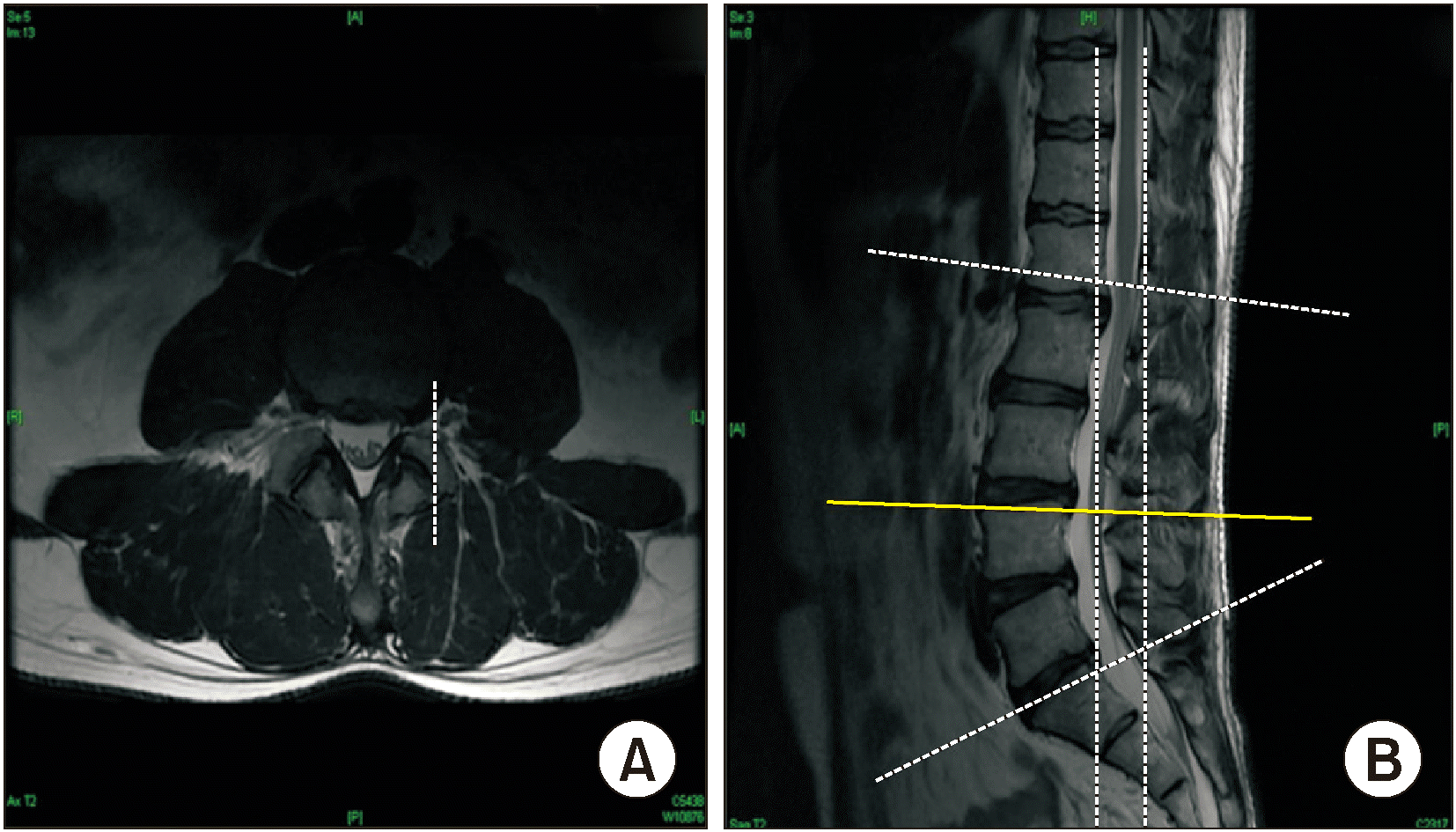
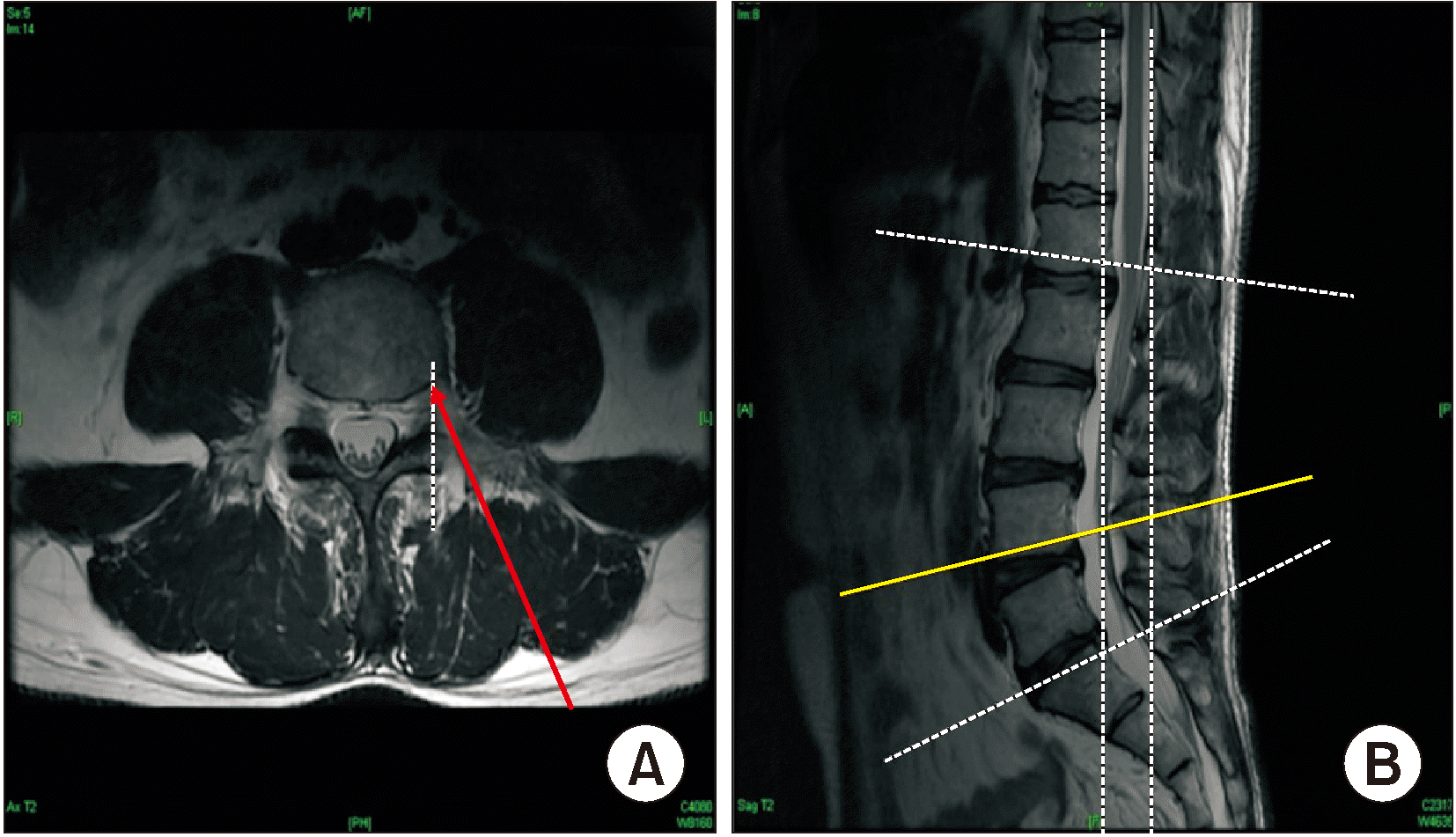
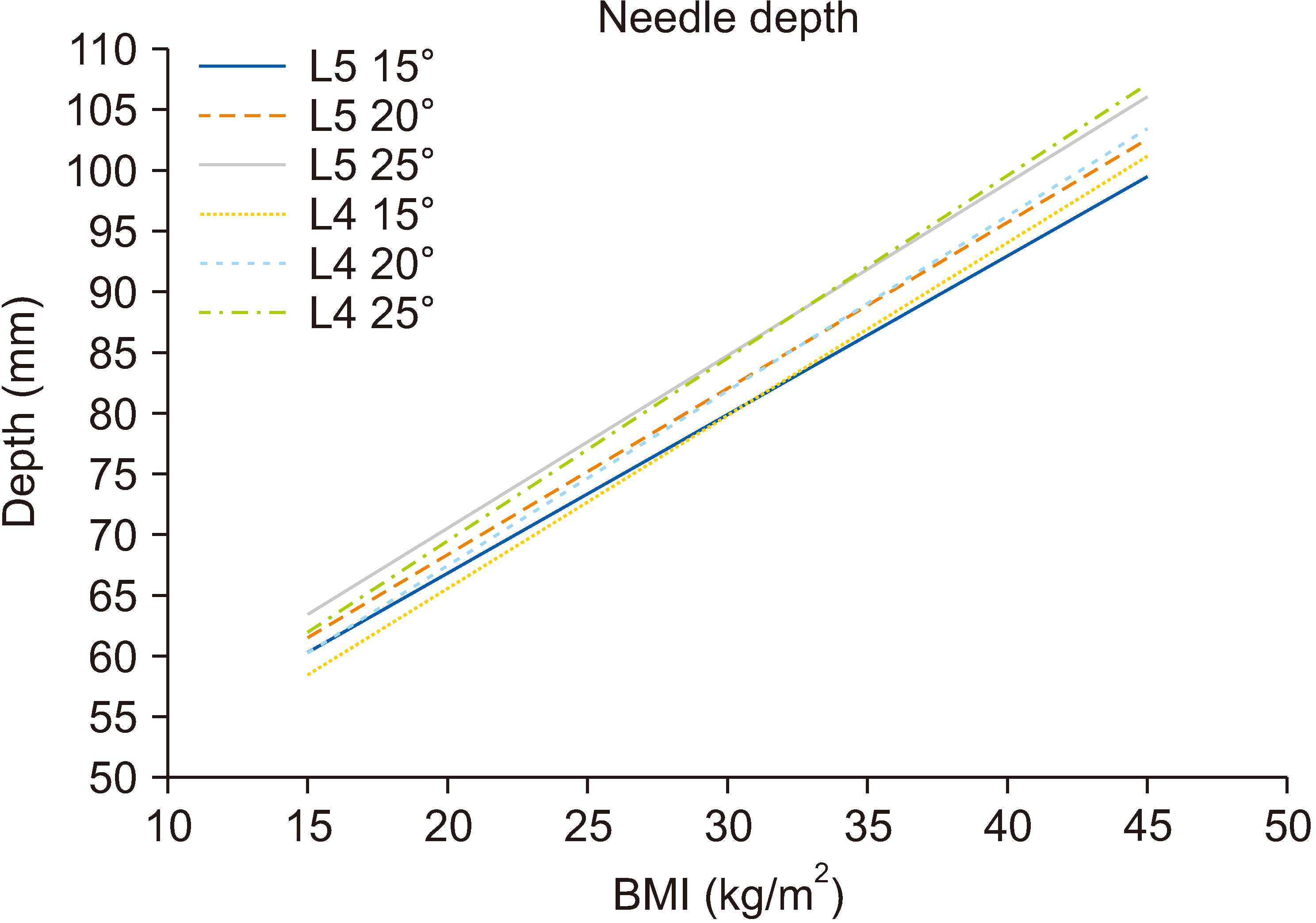
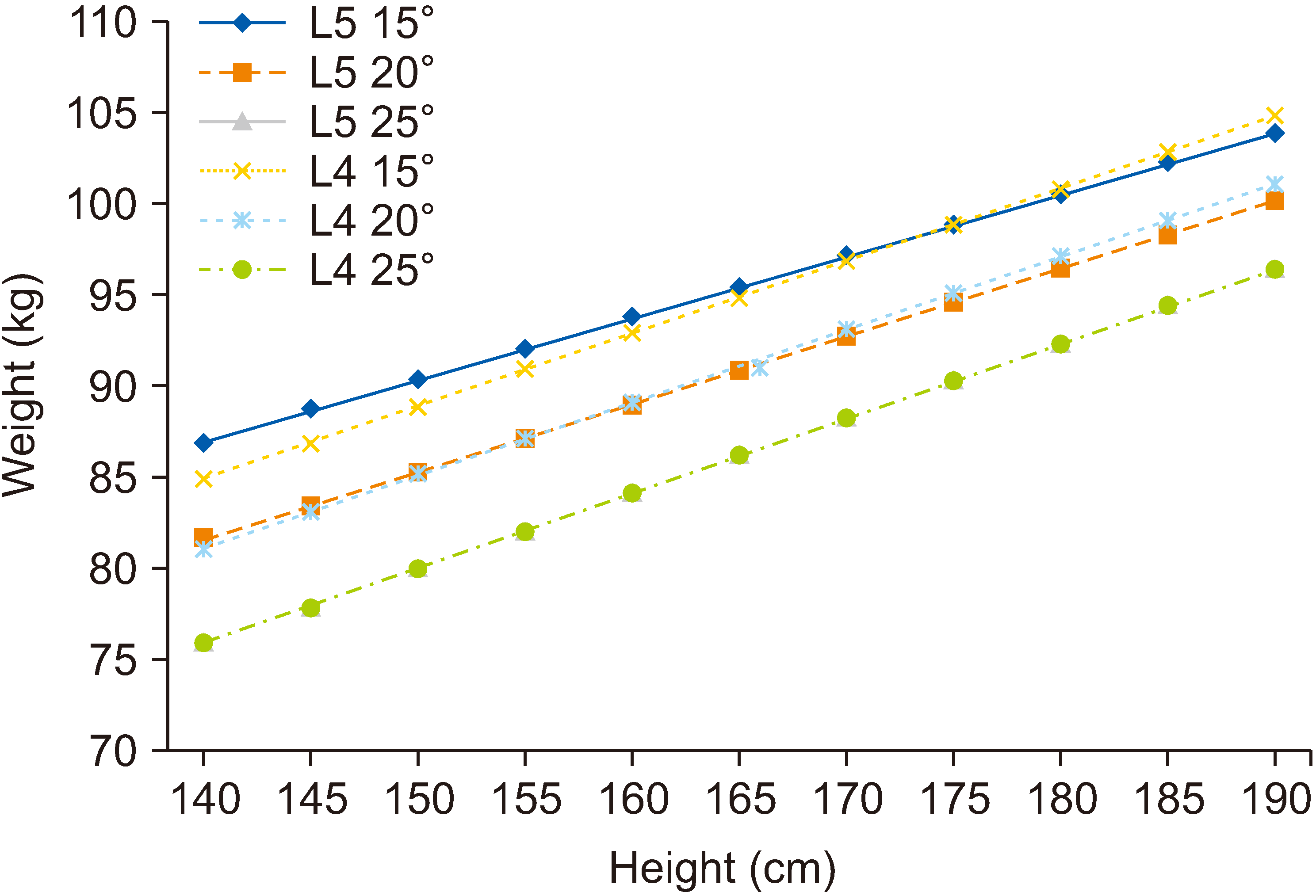




 PDF
PDF Citation
Citation Print
Print



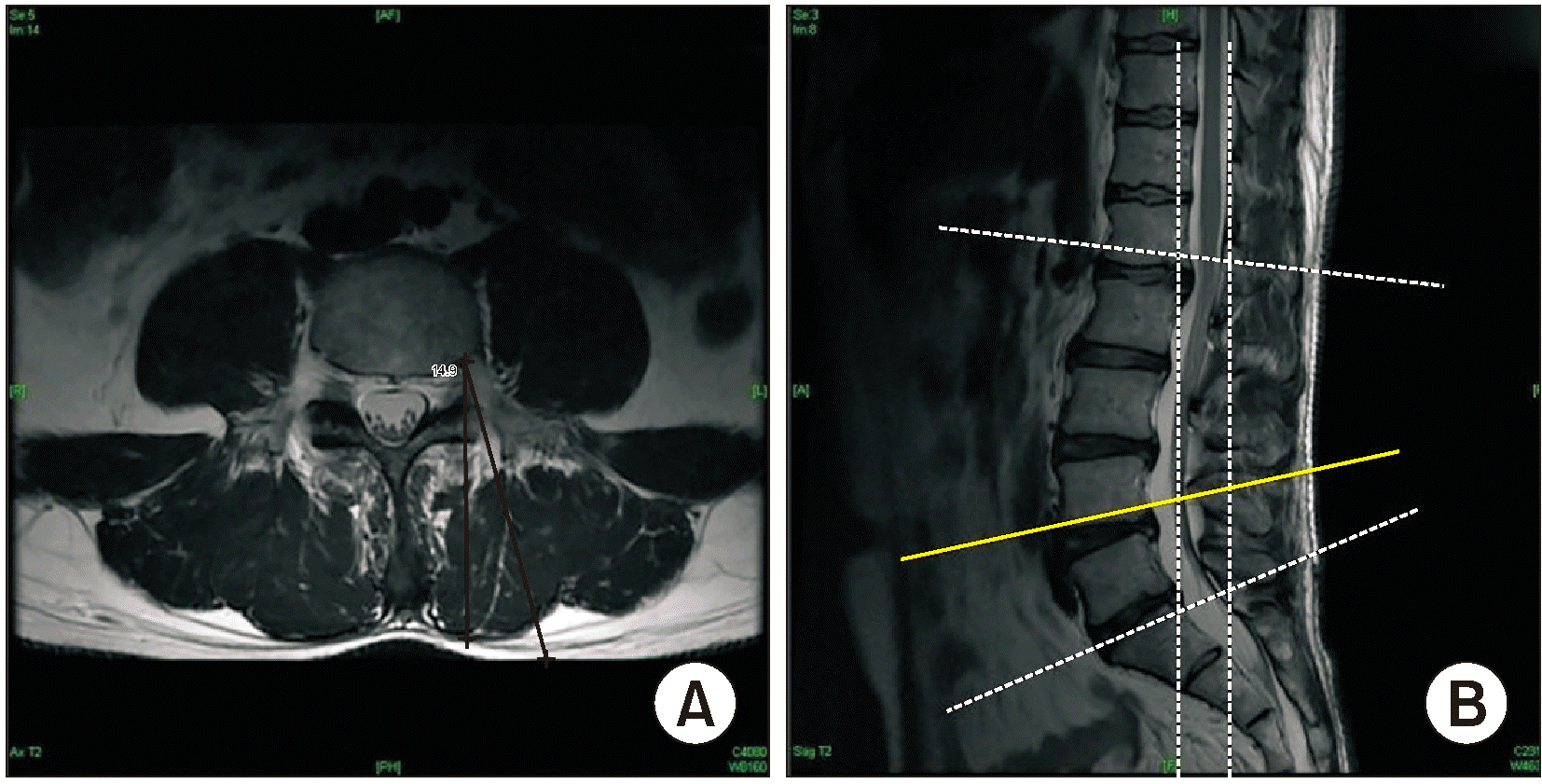
 XML Download
XML Download